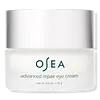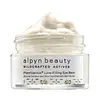What's inside
What's inside
 Key Ingredients
Key Ingredients

 Benefits
Benefits

 Concerns
Concerns

 Ingredients Side-by-side
Ingredients Side-by-side

Water
Skin ConditioningButyrospermum Parkii Butter
Skin ConditioningGlycerin
HumectantCoco-Caprylate/Caprate
EmollientCaprylic/Capric Triglyceride
MaskingCetearyl Olivate
Propanediol
SolventSqualane
EmollientSorbitan Olivate
EmulsifyingCetearyl Alcohol
EmollientMacadamia Ternifolia Seed Oil
EmollientDipalmitoyl Hydroxyproline
Skin ConditioningBehenyl Alcohol
EmollientCarthamus Tinctorius Seed Oil
MaskingMyristyl Myristate
EmollientChlorella Vulgaris Extract
Skin ConditioningFucus Vesiculosus Extract
EmollientOryza Sativa Bran Extract
Skin ConditioningRosmarinus Officinalis Leaf Extract
AntimicrobialHelianthus Annuus Extract
EmollientGluconolactone
Skin ConditioningSodium Chloride
MaskingGlyceryl Caprylate
EmollientBacillus Ferment
Skin ConditioningFructose
HumectantAesculus Hippocastanum Extract
AntioxidantCaffeine
Skin ConditioningTocopherol
AntioxidantXanthan Gum
EmulsifyingCaprylhydroxamic Acid
1,2-Hexanediol
Skin ConditioningTrisodium Ethylenediamine Disuccinate
Citric Acid
BufferingSodium Benzoate
MaskingPotassium Sorbate
PreservativeWater, Butyrospermum Parkii Butter, Glycerin, Coco-Caprylate/Caprate, Caprylic/Capric Triglyceride, Cetearyl Olivate, Propanediol, Squalane, Sorbitan Olivate, Cetearyl Alcohol, Macadamia Ternifolia Seed Oil, Dipalmitoyl Hydroxyproline, Behenyl Alcohol, Carthamus Tinctorius Seed Oil, Myristyl Myristate, Chlorella Vulgaris Extract, Fucus Vesiculosus Extract, Oryza Sativa Bran Extract, Rosmarinus Officinalis Leaf Extract, Helianthus Annuus Extract, Gluconolactone, Sodium Chloride, Glyceryl Caprylate, Bacillus Ferment, Fructose, Aesculus Hippocastanum Extract, Caffeine, Tocopherol, Xanthan Gum, Caprylhydroxamic Acid, 1,2-Hexanediol, Trisodium Ethylenediamine Disuccinate, Citric Acid, Sodium Benzoate, Potassium Sorbate
Water
Skin ConditioningSodium Hyaluronate
HumectantCetearyl Alcohol
EmollientSqualane
EmollientCoconut Alkanes
EmollientGlycerin
HumectantPyrus Malus Fruit Extract
Skin ConditioningCoco-Caprylate/Caprate
EmollientMica
Cosmetic ColorantTitanium Dioxide
Cosmetic ColorantBakuchiol
AntimicrobialCentella Asiatica Meristem Cell Culture
AntioxidantXanthan Gum
EmulsifyingEuphrasia Officinalis Extract
AntimicrobialCetearyl Glucoside
EmulsifyingSorbitan Stearate
EmulsifyingDehydroacetic Acid
PreservativeBenzyl Alcohol
PerfumingLinoleic Acid
CleansingCetyl Hydroxyethylcellulose
Emulsion StabilisingCaffeine
Skin ConditioningTripeptide-29
Skin ConditioningPotassium Sorbate
PreservativeHydrolyzed Sodium Hyaluronate
Skin ConditioningKappaphycus Alvarezii Extract
Skin ConditioningCaesalpinia Spinosa Fruit Extract
Skin ProtectingTocopherol
AntioxidantTin Oxide
AbrasiveCaesalpinia Sappan Bark Extract
Skin ConditioningGlycyrrhiza Glabra Root Extract
BleachingHelianthus Annuus Seed Oil
EmollientArctostaphylos Uva Ursi Leaf Extract
Skin ConditioningAscorbic Acid
AntioxidantCeramide Ng
Skin ConditioningSimmondsia Chinensis Seed Oil
EmollientSalvia Officinalis Leaf Extract
CleansingArnica Montana Flower Extract
MaskingMalva Officinalis Flower Extract
Skin ConditioningCalendula Officinalis Flower Extract
MaskingChamomilla Recutita Flower Extract
MaskingWater, Sodium Hyaluronate, Cetearyl Alcohol, Squalane, Coconut Alkanes, Glycerin, Pyrus Malus Fruit Extract, Coco-Caprylate/Caprate, Mica, Titanium Dioxide, Bakuchiol, Centella Asiatica Meristem Cell Culture, Xanthan Gum, Euphrasia Officinalis Extract, Cetearyl Glucoside, Sorbitan Stearate, Dehydroacetic Acid, Benzyl Alcohol, Linoleic Acid, Cetyl Hydroxyethylcellulose, Caffeine, Tripeptide-29, Potassium Sorbate, Hydrolyzed Sodium Hyaluronate, Kappaphycus Alvarezii Extract, Caesalpinia Spinosa Fruit Extract, Tocopherol, Tin Oxide, Caesalpinia Sappan Bark Extract, Glycyrrhiza Glabra Root Extract, Helianthus Annuus Seed Oil, Arctostaphylos Uva Ursi Leaf Extract, Ascorbic Acid, Ceramide Ng, Simmondsia Chinensis Seed Oil, Salvia Officinalis Leaf Extract, Arnica Montana Flower Extract, Malva Officinalis Flower Extract, Calendula Officinalis Flower Extract, Chamomilla Recutita Flower Extract
Ingredients Explained
These ingredients are found in both products.
Ingredients higher up in an ingredient list are typically present in a larger amount.
Caffeine is most associated with coffee, tea, and cacao. In skincare, it helps with calming inflammation and is rich in antioxidants.
While caffeine is used to treat cellulite and and dark circles, further studies are needed to prove this. It has been believed to help with these skin conditions due to its ability to dilate blood vessels and increase blood flow.
Some studies are looking into caffeine's ability to protect against UV rays.
Learn more about CaffeineCetearyl alcohol is a mixture of two fatty alcohols: cetyl alcohol and stearyl alcohol. It is mainly used as an emulsifier. Emulsifiers help prevent the separation of oils and products. Due to its composition, it can also be used to thicken a product or help create foam.
Cetearyl alcohol is an emollient. Emollients help soothe and hydrate the skin by trapping moisture.
Studies show Cetearyl alcohol is non-toxic and non-irritating. The FDA allows products labeled "alcohol-free" to have fatty alcohols.
This ingredient is usually derived from plant oils such as palm, vegetable, or coconut oils. There is debate on whether this ingredient will cause acne.
Due to the fatty acid base, this ingredient may not be Malassezia folliculitis safe.
Learn more about Cetearyl AlcoholCoco-Caprylate/Caprate is created from fatty coconut alcohol, caprylic acid, and capric acid.
It is a lightweight emollient. Emollients create a thin barrier on the skin to trap moisture in. This helps keep your skin hydrated and soft.
Once applied, Coco-Caprylate/Caprate is absorbed quickly and leaves a silky feel.
Coco-Caprylate/Caprate may not be fungal acne safe.
Learn more about Coco-Caprylate/CaprateGlycerin is already naturally found in your skin. It helps moisturize and protect your skin.
A study from 2016 found glycerin to be more effective as a humectant than AHAs and hyaluronic acid.
As a humectant, it helps the skin stay hydrated by pulling moisture to your skin. The low molecular weight of glycerin allows it to pull moisture into the deeper layers of your skin.
Hydrated skin improves your skin barrier; Your skin barrier helps protect against irritants and bacteria.
Glycerin has also been found to have antimicrobial and antiviral properties. Due to these properties, glycerin is often used in wound and burn treatments.
In cosmetics, glycerin is usually derived from plants such as soybean or palm. However, it can also be sourced from animals, such as tallow or animal fat.
This ingredient is organic, colorless, odorless, and non-toxic.
Glycerin is the name for this ingredient in American English. British English uses Glycerol/Glycerine.
Learn more about GlycerinPotassium Sorbate is a preservative used to prevent yeast and mold in products. It is commonly found in both cosmetic and food products.
This ingredient comes from potassium salt derived from sorbic acid. Sorbic acid is a natural antibiotic and effective against fungus.
Both potassium sorbate and sorbic acid can be found in baked goods, cheeses, dried meats, dried fruit, ice cream, pickles, wine, yogurt, and more.
You'll often find this ingredient used with other preservatives.
Learn more about Potassium SorbateSqualane is an emollient that helps the skin hold onto moisture. It's an oily liquid that occurs naturally in certain types of fish and plant oils.
Because squalane boosts hydration in the skin, it also comes with plenty of benefits: it is an antioxidant and can help fight free radicals and skin damage. Squalane is also found to have a detoxifying effect when applied.
Squalane comes from squalene, which occurs naturally within the sebum of our skin. It is one of the oils our skin produces to keep itself hydrated. Squalane is the hydrogenated version of squalene and has a longer shelf life.
Research shows that squalane is non-irritating (even at 100% concentration).
In general, it's a fantastic ingredient. It does a great job at hydrating the skin, and it's suitable for those with sensitive skin.
The source of squalane may impact malassezia / fungal acne. This is because olive oil derived squalane can contain impurities such as fatty acids and plant waxes. Sugarcane derived squalane is recommended for anyone with malassezia concerns.
Is squalane vegan?
This depends on the source. Squalane can be derived from both plants and animals. Most squalane used in skincare comes from plants.
Please note: the source of squalane is only known if disclosed by the brand. We recommend reaching out to the brand if you have any questions about their squalane.
Read more about squalene with an "e".
Is squalane an oil?
Squalane is often called an oil, but it’s technically not; it’s a hydrocarbon, meaning it’s only made of carbon and hydrogen, unlike true oils which are triglycerides made of fatty acids and glycerol.
The term “oil-free” isn’t regulated, so companies can define it however they want. Some exclude all oils, while others just avoid mineral oil or comedogenic oils.
While some people avoid oils thinking they cause breakouts, the right kind of oil (or oil-like ingredient like squalane) can actually help balance and hydrate your skin. It’s worth testing out simple oils or squalane to see what works best for your skin.
Learn more about SqualaneTocopherol (also known as Vitamin E) is a common antioxidant used to help protect the skin from free-radicals and strengthen the skin barrier. It's also fat soluble - this means our skin is great at absorbing it.
Vitamin E also helps keep your natural skin lipids healthy. Your lipid skin barrier naturally consists of lipids, ceramides, and fatty acids. Vitamin E offers extra protection for your skin’s lipid barrier, keeping your skin healthy and nourished.
Another benefit is a bit of UV protection. Vitamin E helps reduce the damage caused by UVB rays. (It should not replace your sunscreen). Combining it with Vitamin C can decrease sunburned cells and hyperpigmentation after UV exposure.
You might have noticed Vitamin E + C often paired together. This is because it is great at stabilizing Vitamin C. Using the two together helps increase the effectiveness of both ingredients.
There are often claims that Vitamin E can reduce/prevent scarring, but these claims haven't been confirmed by scientific research.
Learn more about TocopherolWater. It's the most common cosmetic ingredient of all. You'll usually see it at the top of ingredient lists, meaning that it makes up the largest part of the product.
So why is it so popular? Water most often acts as a solvent - this means that it helps dissolve other ingredients into the formulation.
You'll also recognize water as that liquid we all need to stay alive. If you see this, drink a glass of water. Stay hydrated!
Learn more about WaterXanthan gum is used as a stabilizer and thickener within cosmetic products. It helps give products a sticky, thick feeling - preventing them from being too runny.
On the technical side of things, xanthan gum is a polysaccharide - a combination consisting of multiple sugar molecules bonded together.
Xanthan gum is a pretty common and great ingredient. It is a natural, non-toxic, non-irritating ingredient that is also commonly used in food products.
Learn more about Xanthan Gum